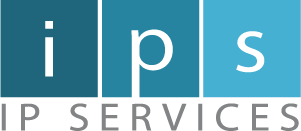You can’t get through life without being on a team at some point whether it is a sports team or school project or at work. Since we’ve all been a part of a team, we know how hard it can be.
Teams make projects more effective, but only if the team functions properly. Everyone must know what parts they play, each other’s strengths and weaknesses, what each member is doing, and your overall goals as a team. Team members must be able to ask questions and get answers. They must each feel like they have a voice and are important. Inclusive communication is vital to a well-functioning team.
Because communication is important, there are many ways to do it. You must have a plan and you must remember to have a balance. If there’s too much talking, then there’s not enough working! Quality communication is more important than quantity. But you also don’t want people missing information (“What email? I didn’t see an email!”).
Below are several methods that you can use to encourage strong team communication. Try a few and find out what works for your team. It may be all or just a combination of a few of these ideas, but make sure you cater specifically to your team to help everyone stay informed and feel included.
1. Meetings
Important information needs to be shared and each team member must feel as though they are a part of the team with their own voice. You can accomplish this by having different types of meetings and scheduling regularly. At IPS, we have both manager/single employee meetings (1:1s) and team meetings at least once a month.
If you are a manger meeting with individual employees, make sure you are making your employee comfortable. Some of the teams at our company even do walking 1:1s with employees. If your employees are comfortable, they will be more likely to bring issues and ideas to you.
Team meetings should be more structured. Make an agenda so each person can add their talking points and feel encouraged to speak. This also helps to keep the meeting on schedule. Another way to balance time and talk is to consider having two types of meetings (e.g. meetings vs. briefings) and make sure to label them in the meeting request. You can have a meeting where discussion is welcome (meeting) and more formal, shorter meetings meant to provide information (briefing). Designating and properly defining the meetings will increase communication efficiency while still creating a space for all voices to be heard.
2. Online Communication – Slack, Microsoft Teams, or other Tools
Companies have become less traditional. Many have global offices with team members working varied hours. Sometimes team members are remote and can even work in different cities and time zones. Lots of offices are open concept, so that verbal discussions are distracting for others in the office and may provide some privacy issues. And yet, it’s important to be able to discuss issues as they arise or to be able to touch base quickly as opposed to starting an email chain.
Having a form of online conversation can allow team members to communicate with their team no matter where they are located, in real time, and without disturbing other co-workers. It keeps a record of discussion for those who weren’t working at the time, so no one is left out or missing vital information. Find a tool that works for your team.
3. Newsletters
Your company has probably spent a lot of time coming up with goals and you’ve spent a lot of time making sure that your team is working toward those company goals. Make sure everyone knows about the strategy and update them on progress. Newsletters keep everyone on the same page and can show the team progress towards goals so that team members see that their work has meaning. You can include information such as:
- Updates on projects
- Individual and team successes
- Learning videos
- News and industry trends
- New policies
A well-written newsletter is a simple way to help your team feel as though they know what is going on, what’s expected, and can see that they are an integral part of the team.
4. Process Documentation – OneNote Notebooks
Is everyone on the same page? Having repetitive processes documented helps make sure you are all following the same process for the same result. It works as quality assurance, because of operational consistency. Process documentation provides clarity. It helps with long-term planning. It also offers the ability to look for process improvements and makes training easier when new team members are added. Process documents can even be used to settle disputes.
You might not think of process documentation as a communication method, but it really does help each team member to be on the same page, to trust each other to do the job, and to feel included in the process.
5. Team-building Activities
Boost morale. Encourage discussion. Get to know, like, and trust each other. At IPS, we’ve had team lunches, completed the Myers-Briggs personality test, done an escape room, and had a Fun Squad which ran monthly activities. Our teams organized and attended the events themselves. We’ve also had cross-team morale events like food days. It gives everyone a chance to relax and feel appreciated for the hard work they do every day. If your team members like their jobs and feel included, they’re going to do a better job.
Team work is hard, but it can be made infinitely easier if you have trust and strong communication. Think about trying a few of these methods and you should see an increase in productivity and inclusion. Make sure each member of your team knows that their voice is important!
Watch for future blog posts on other methods of communication such as metrics reports, newsletters, and process documentation. And if you are looking for help with newsletters or process docs, just ask the IPS Program Management experts on our Contact Us page!

written by
Theresa Farrell
September 24, 2019
Stay informed with industry-relevant emails curated by our team of experts.
We send out emails once or twice a month relating to IP Services, industry news, and events we'll be attending so you can meet our experts in person.

Theresa Farrell
Theresa joined IP Services over a decade ago after graduating with a bachelor’s degree in Finance. She previously worked on both the Fraud Prevention and Privacy & Compliance teams. For most of her tenure, she has worked in Program Management as a Program Support Specialist which includes event planning, metrics reporting, program development and communication management.



